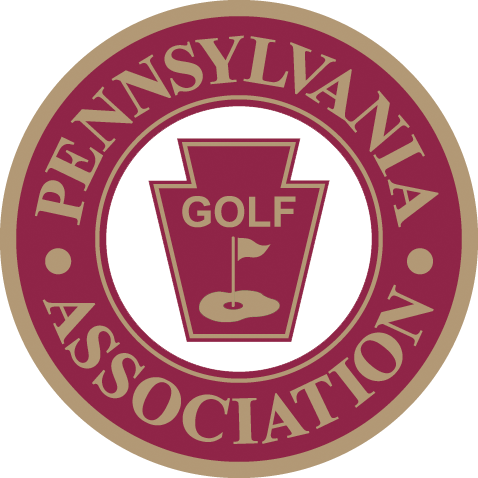Philmont Country Club
| Philmont Country Club 301 Tomlinson Road Huntingdon Valley, PA 19006 www.philmontcc.org Architect: Willie Park, Jr. | |||||||||||||||||||||||||||||||||||||||||||||||||||||||||||||||||||||||||||||||||||||||||
| |||||||||||||||||||||||||||||||||||||||||||||||||||||||||||||||||||||||||||||||||||||||||
| Director of Golf | Chris R Wegner | (215) 947-1271 |
| Golf Professional | Aaron Hanna | (215) 947-0741 |
| Golf Professional | Chris R Wegner | (215) 947-0741 |
| General Manager | Chris R Wegner | (215) 947-1271 |
| Superintendent | Tony Johnson | (215) 947-1271 |
Course Slope & Ratings
| North Course Tees | Front 9 | Back 9 | Course | ||||||
|---|---|---|---|---|---|---|---|---|---|
| Rating | Slope | Rating | Slope | Yards | Rating | Slope | Par | ||
| Gold | Male | 33.3 | 126 | 34.4 | 131 | 5587 | 67.7 | 129 | 70 |
| White/Gold Combo | Male | 34.4 | 135 | 34.7 | 132 | 5890 | 69.1 | 134 | 70 |
| White | Male | 35.3 | 139 | 35.5 | 135 | 6229 | 70.8 | 137 | 70 |
| Blue/White Combo | Male | 36 | 136 | 35.7 | 143 | 6408 | 71.7 | 140 | 70 |
| Blue | Male | 36.2 | 137 | 36.1 | 145 | 6526 | 72.3 | 141 | 70 |
| Red | Female | 36.1 | 129 | 37.5 | 142 | 5587 | 73.6 | 136 | 74 |
| White | Female | 38.4 | 138 | 38.8 | 148 | 6229 | 77.2 | 143 | 74 |
Directions
Club History
At Philmont, neither the location or the name has ever changed. And as was the case at Springhaven, it was a woman who spurred this club into existence, even to the point of finding the site for it.
In the early years of the new century, there was a steady migration of the center-city Jewish population to the suburbs of eastern Montgomery County. This "exodus" inclined to follow the Reading Railroad line, with most people establishing their homes within an easy walk of the train station in such communities as Oak Lane, Elkins Park, and Jenkintown, though the more adventurous even went so far into the hinterland as Rydal and Meadowbrook.
Mrs. Samuel D. Lit, whose husband owned and ran the well-known department store at 8th and Market Streets, was convinced that what the former city dwellers needed was a country club. It would serve as a gathering place for those who had automatically seen a great deal of each other when they were all living in town. Equally important, it would provide desirable recreational opportunities ("Now that we’ve got all this fresh air, what are we going to do with it?").
Since the next step was to find a location for the club, Mrs. Lit started looking around. It was in the late spring of 1906 that she invited Ellis Gimbel, Jack Aspen, and Harry Leopold to meet her just north of Bethayres one day at a little flag station (the train stopped only if you flagged it down) on Reading called Philmont. Nearby was a rolling, tree-studded 92-acre farm where ponies were being raised. It looked to be ideal, and it was for sale.
A $250 deposit on a lease at $2,500 a year secured the property together with an option to buy it for $65,000. A landscape engineer said that a nine-hole couse could be laid out for about $5,000. It was estimated that the farmhouse on the hill could be converted into a clubhouse for $8,000.
An organizational meeting was attended by nearly 200 people, including many who still lived in the city. Ellis Gimbel was elected president. Completing the slate were Jack Aspen (vice president), Ely Selig (treasurer), and Charles Fox (secretary).
The club, which took its name from the train station, was an instantaneous—indeed, rousing—success. Five months later it could point to 592 members, with regular members paying annual dues of $50.
Few of those who joined had ever struck a golf ball. In fact, when the first greens committee was appointed, only two members could be found who had played golf. Tennis was the most popular sport then at Philmont. Baseball also had plenty of enthusiasts. Even polo had its devotees. And the club’s younger women organized a basketball team.
Philmont officially opened on May 18,1907. In those days many of the members who continued to reside in the city took the 9:17 train on Saturday morning from Reading Terminal, and went back home on the 12:19 a.m., following the Saturday evening festivities. For them, a day at the country club was a long day. A horse-drawn bus transported them to and from the Philmont station.
Starting out with nine holes, Philmont now offers a pair of 18-hole courses (North & South). Even though there may have be some controversial discussions on who the original course designers were, history shows that the designer for the South course was John Reid, with future revisions conducted by Hugh Wilson (1913), Willie Park, Jr. (1923) and William F. Gordon. Reid also designed the original layouts at Atlantic City Country Club, Wilmington Country Club and Lancaster Country Club. The North Course was designed by Park Jr. and revisions were led by William F. Gordon. Park Jr. designed the famous Olympia Fields Country Club in Chicago, Ill.
